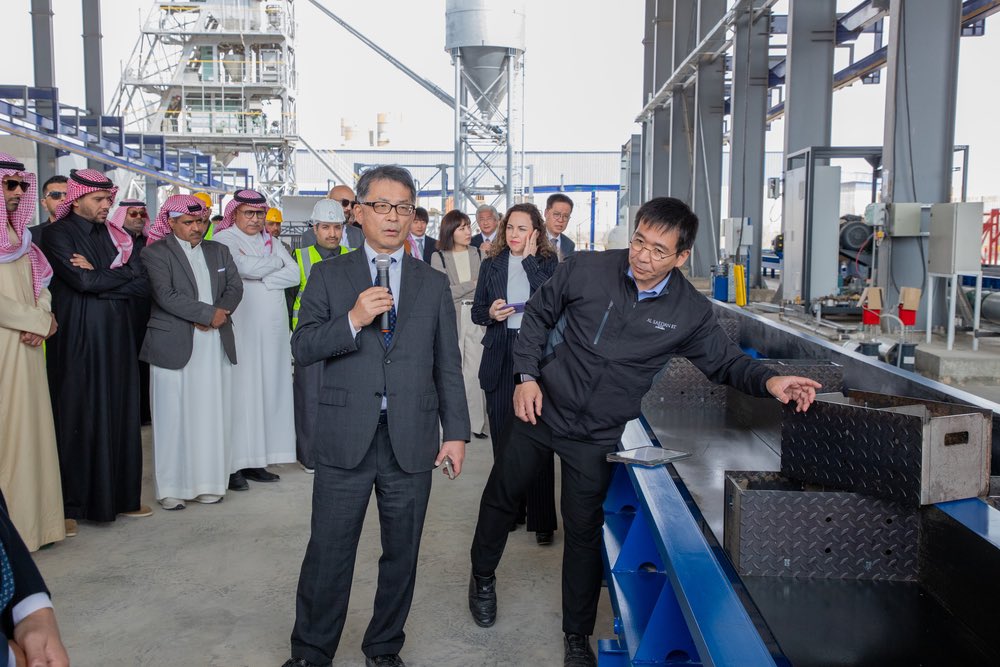The groundbreaking factory in Sudair Industrial City is a testament to the successful collaboration between Saudi and Japanese entities in the construction technology. This partnership merges Japanese technological advancements with Saudi Arabia’s strategic vision in construction. The collaboration also aims to revolutionize the building sector by introducing cutting-edge construction techniques.
The Saudi Japanese synergy is not just about technology transfer; it’s a blend of cultural and technical expertise. This joint venture demonstrates a commitment to sustainable development and innovation. The factory, significantly, serves as a hub for exchanging knowledge and skills, fostering a new era in construction. The collaboration is expected to set new benchmarks in the construction industry, particularly in sustainable and advanced building practices. It signifies a step forward in the global construction landscape, with potential influences extending beyond the Middle East.
Construction Technology: Revolutionizing Building Durability and Longevity
The new factory’s focus on enhancing building durability is revolutionary. Techniques employed extend the lifespan of structures to an impressive 200 years. This longevity is unprecedented in the residential sector. The approach involves utilizing advanced materials and construction methods, emphasizing sustainability and resilience. Durability is crucial in modern architecture, especially considering environmental challenges and the need for long-term solutions. The factory’s commitment to longevity reflects a shift in construction priorities, from short-term functionality to long-term sustainability. By prioritizing durability, the factory sets a new standard for future construction projects. This approach not only ensures structural safety but also contributes to reducing the environmental impact by minimizing the need for frequent rebuilds and renovations.
Adapting High-Quality Concrete Technologies for Residential Sectors
Adapting high-quality concrete technologies from commercial to residential sectors marks a significant shift. The factory employs techniques used in constructing towers and bridges to residential buildings. This adaptation ensures a higher quality of construction in homes, offering increased safety and durability. The use of such robust materials in residential construction is a game-changer. It promises to elevate the standard of living spaces, ensuring they are built to last and withstand various environmental challenges. The technology’s application in the residential sector reflects an understanding of the growing need for more resilient housing. As urban populations grow, the demand for durable, high-quality living spaces increases. The factory’s initiative to bring these advanced technologies to residential construction addresses this demand effectively.
Construction Technology: Innovative Use of Non-Structural Insulated Panels
The factory’s use of non-structural insulated panels for walls is a notable innovation. These panels, basically, allow for easy modification and redesign of buildings, offering unprecedented flexibility. This adaptability is crucial in today’s rapidly changing world, where the needs of a building’s occupants can evolve quickly. The insulated panels provide excellent thermal efficiency, reducing energy consumption and costs. This feature is particularly beneficial in regions with extreme weather conditions. The panels’ non-structural nature allows for quick and efficient building modifications without compromising structural integrity. This innovation is not just about convenience; it’s a step towards sustainable and adaptable urban development. It empowers residents to modify their living spaces as needed, promoting a more dynamic and responsive approach to housing.
Construction Technology: Building Earthquake and Storm Resistant Structures
Developing structures that can withstand earthquakes and storms is a primary focus of the factory. The ability to endure seismic events up to 7 magnitudes is a significant achievement. This resilience is crucial in areas prone to natural disasters, providing safety and peace of mind to residents. The technology also equips buildings to withstand winds of up to 100 meters per second, safeguarding against severe weather conditions. Such strength is essential in ensuring the longevity and durability of structures. The emphasis on building resilient structures is a response to the increasing frequency of natural disasters globally. By adopting these robust building practices, the factory contributes to creating safer communities. This resilience is not only a matter of safety; it’s also about sustainability, reducing the need for repairs and rebuilds after disasters.
Related Topics:
French Construction Companies to Show Their Products at The Big 5
Saudi EXIM Bank Signs MoU with Japan’s Insurance Firm NEXI
Japan Eases Visa Requirements for Saudi Nationals
Short link :
Post Views: 291



